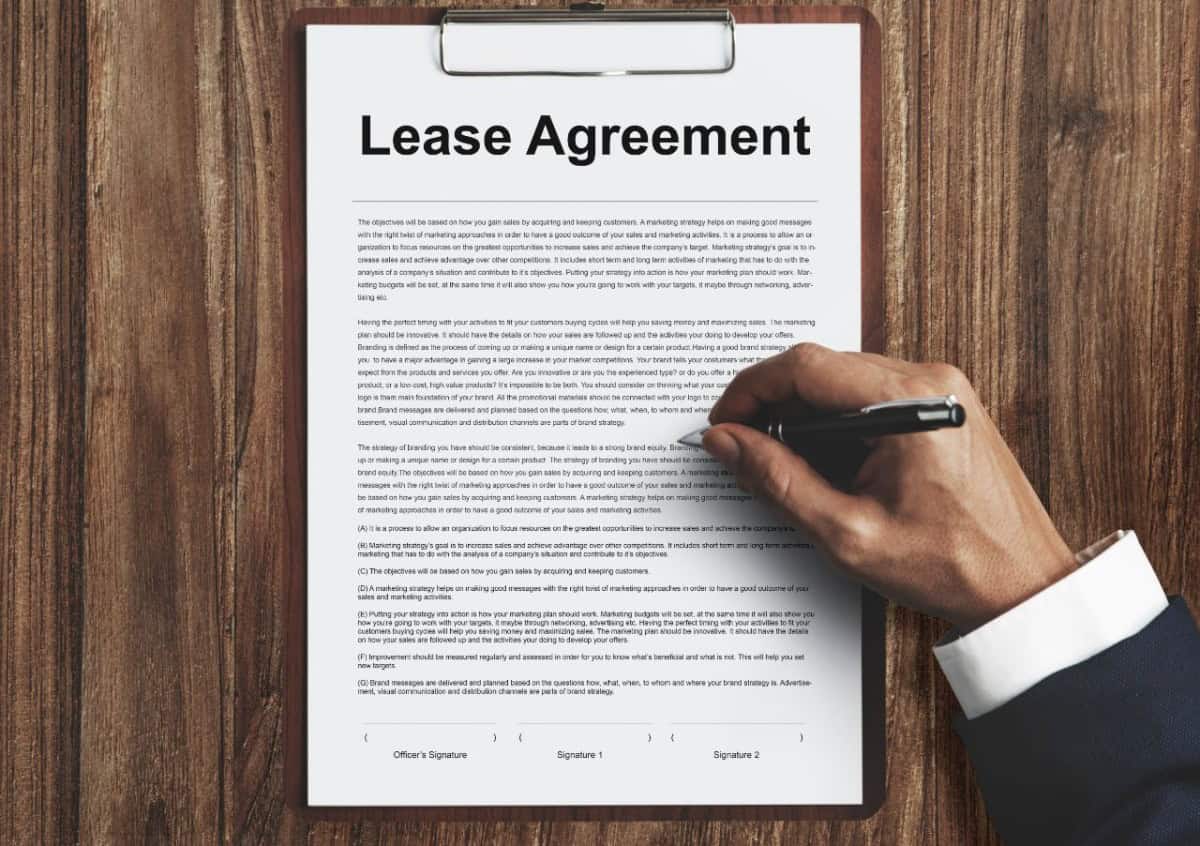Mastering Lease Agreements: Key Clauses Every Landlord and Tenant Should Know
- September 6, 2024
- Mia Robinson
- Category: Lease Agreements

A properly formulated rental contract is essential for a prosperous relationship between landlord and tenant, providing security for both sides and establishing transparent responsibilities. The agreement offers legal protection and prevents disputes by defining important terms like rent, maintenance duties, and lease termination.
A well-drafted lease contract clearly outlines the terms of the lease so that both landlords and tenants are aware of their rights and responsibilities. For instance, it is important to have clear definitions of rent payment schedules and security deposit conditions to avoid any confusion. Statements regarding maintenance obligations benefit both parties by defining responsibilities for repairs and maintenance. Landlords use these specifics to maintain their properties and provide tenants with clear expectations for their duties.
Lease agreements also safeguard against future disputes. Terms regarding lease renewal policies, notice periods for lease termination, and conditions for subletting help prevent misunderstandings. In the event of a legal dispute, the lease serves as a crucial document that both parties can refer to, ensuring a smooth resolution process.

Basic Information: What Must Be Included in a Lease Agreement
A well-structured lease agreement must include specific details to ensure legal clarity for both landlords and tenants. Essential information starts with the full names of all parties involved, including each tenant and the landlord. The property address is also crucial, as it clearly identifies the rental location.
The lease term length is another vital component. This specifies whether the lease is for a fixed period, such as 12 months, or operates on a month-to-month basis. Alongside the term, the lease should outline renewal policies, detailing how and when the lease can be renewed or extended. This is important to ensure that both the tenant and landlord know the steps required to continue the agreement.
Another important part of the lease is the section about ending the lease. It should clearly say how much notice either side needs to give to end the lease. This helps protect both sides legally and makes sure everyone knows their rights.
Including these details in a lease agreement helps create a clear understanding between landlords and tenants. It minimizes confusion and provides legal safeguards if disputes arise.
Rent and Security Deposits: The Financial Foundation
In a rental contract, the sections outlining rent and security deposits are crucial for setting the financial framework for landlords and tenants. The rental agreement should clearly outline the amount of rent, the specific date it is due, and the approved payment options. Several landlords accept payments through check, money order, or electronic transfers, though payment options may be influenced by local regulations. Having rules about late fees and grace periods promotes clear communication about payment expectations and consequences for late payments.
Security deposits, a one-time payment usually equal to one or two months’ rent, are held by the landlord as financial protection against property damage or unpaid rent. The security deposit clause should outline the amount required, how it will be held, and the conditions under which it will be returned. State laws often govern security deposit limits, how the funds must be handled (e.g., in an interest-bearing account), and the timeframe for returning deposits after the lease ends. By clearly specifying these terms, both parties can avoid misunderstandings and potential disputes related to financial matters.
Maintenance Responsibilities: Who Fixes What?
In any lease agreement, clearly defining maintenance responsibilities helps avoid misunderstandings and potential disputes between landlords and tenants. Generally, the landlord is responsible for major repairs and ensuring the property remains habitable, while the tenant handles minor upkeep and cleanliness.
Landlords are usually responsible for keeping important systems in good condition, such as plumbing, heating, and electrical. They need to make sure the property is safe, comfortable, and meets local health and safety rules. This means fixing things like structural problems, leaks, or broken appliances that are mentioned in the lease. If these systems stop working, the landlord must fix them, often within a certain time set by the state, especially in urgent situations like no heat during winter.
Tenants, on the other hand, are responsible for keeping the property clean and addressing minor issues like replacing light bulbs or air filters. They are also obligated to report any maintenance problems to the landlord promptly. Failure to do so can sometimes lead to greater damage, which may result in the tenant being held responsible for repair costs.
A well-crafted lease agreement will distinguish between routine maintenance and emergency repairs. Routine tasks, such as lawn care or cleaning, may be assigned to the tenant, while emergency repairs—such as addressing a burst pipe or broken heater—are the landlord’s duty. Local laws and lease terms often dictate how quickly landlords must respond to emergencies, ensuring the property remains safe and habitable.
Outlining these duties in the lease agreement can simplify lease terms, prevent confusion at lease renewals, and streamline lease termination if necessary. Both parties benefit from this clarity, which helps ensure a seamless rental experience.

Termination and Renewal Clauses: Ending or Continuing the Lease
In a lease agreement, the termination and renewal clauses are vital for outlining how the contract can end or continue. Lease termination often requires clear notice periods, typically ranging from 30 to 60 days, depending on state laws and lease terms. Tenants or landlords must provide written notice within this period to terminate the agreement. Some lease agreements may include early termination clauses, allowing for an exit under specific conditions, such as job relocation or property damage. Failure to provide proper notice may result in penalties or continued tenancy under existing terms.
Meanwhile, there are different lease renewal policies. A lot of leases have a provision for automatic renewal, which means the contract continues with the same conditions unless one party gives a notice of non-renewal. If the lease has a set duration, the landlord or tenant must start renewal negotiations before the lease expires. Certain contracts may include the possibility of transitioning to a month-to-month agreement once the initial term is up, giving flexibility but usually necessitating shorter notice for termination.
Understanding and adhering to the termination and renewal policies in a lease agreement ensures that both landlords and tenants are prepared for the end or continuation of the lease. These clauses protect both parties by clearly defining the terms for ending or renewing the lease, reducing the risk of disputes and ensuring compliance with state laws.
Subletting and Assignment: Sharing or Transferring the Lease
Subletting and assigning a lease allow tenants to transfer part or all of their rental rights to another party. However, the process is regulated, and both actions typically require landlord approval as outlined in the lease agreement.
Subletting occurs when a tenant rents out part or all of their unit to a third party (the subtenant) while still maintaining the original lease with the landlord. In this case, the original tenant remains responsible for the lease terms, including paying rent and any damages. Subletting can be a helpful option if a tenant needs to leave temporarily, but it’s essential to have a written agreement and the landlord’s consent to avoid complications.
Lease assignment is longer-lasting. The current tenant hands over all their responsibilities to a new tenant (the assignee) for the rest of the lease period. In numerous instances, the landlord can consider both the original tenant and the new tenant responsible if problems occur. Nevertheless, certain landlords could free the initial tenant from responsibility when the lease is transferred, thus it is crucial to address this in the contract.
Most lease agreements specify whether subletting or assignment is allowed, and the landlord’s approval is typically required. Some states prohibit landlords from unreasonably withholding consent if the prospective subtenant or assignee meets the lease’s criteria, such as the ability to pay rent and comply with property rules.

Legal Clauses to Watch Out For: Protections and Pitfalls
Lease contracts contain many legal clauses meant to safeguard the interests of both landlords and tenants, so it’s crucial to understand crucial clauses that can have a major effect on your rights. For landlords, the process of removing tenants is one of the most important safeguards. Clauses pertaining to eviction specify situations in which a tenant may be removed, such as failure to pay rent or breaches of the lease agreement. Landlords must adhere to legal procedures, usually involving a notice period and possibly a court order, as dictated by state regulations.
For tenants, liability clauses can present a major concern. These clauses often outline the tenant’s responsibility for damages caused to the property, but they can also include overly broad language that might hold the tenant liable for issues beyond their control. Tenants should review these carefully to ensure they are not taking on unnecessary risks.
Automatic renewal clauses in leases are common traps that can renew the lease without the tenant’s explicit consent unless a termination notice is provided. This could result in tenants inadvertently getting stuck in a new lease agreement. Tenants must comprehend renewal policies and be aware of required termination notice to prevent extending the lease unexpectedly. Another problem to watch out for are clauses that restrict the tenant’s ability to end the lease early, often resulting in significant fines for doing so before the agreed-upon time.
Being aware of these protections and potential pitfalls can help ensure a smooth rental experience for both parties. Always review the lease carefully and seek legal advice if needed to avoid common traps.
Conclusion
To sum up, both landlords and tenants need to understand and negotiate lease terms carefully. Reviewing the lease agreement thoroughly can help avoid future conflicts. When necessary, getting legal advice ensures that both sides are clear and protected, making sure the final lease agreement meets legal requirements and both parties’ expectations.




